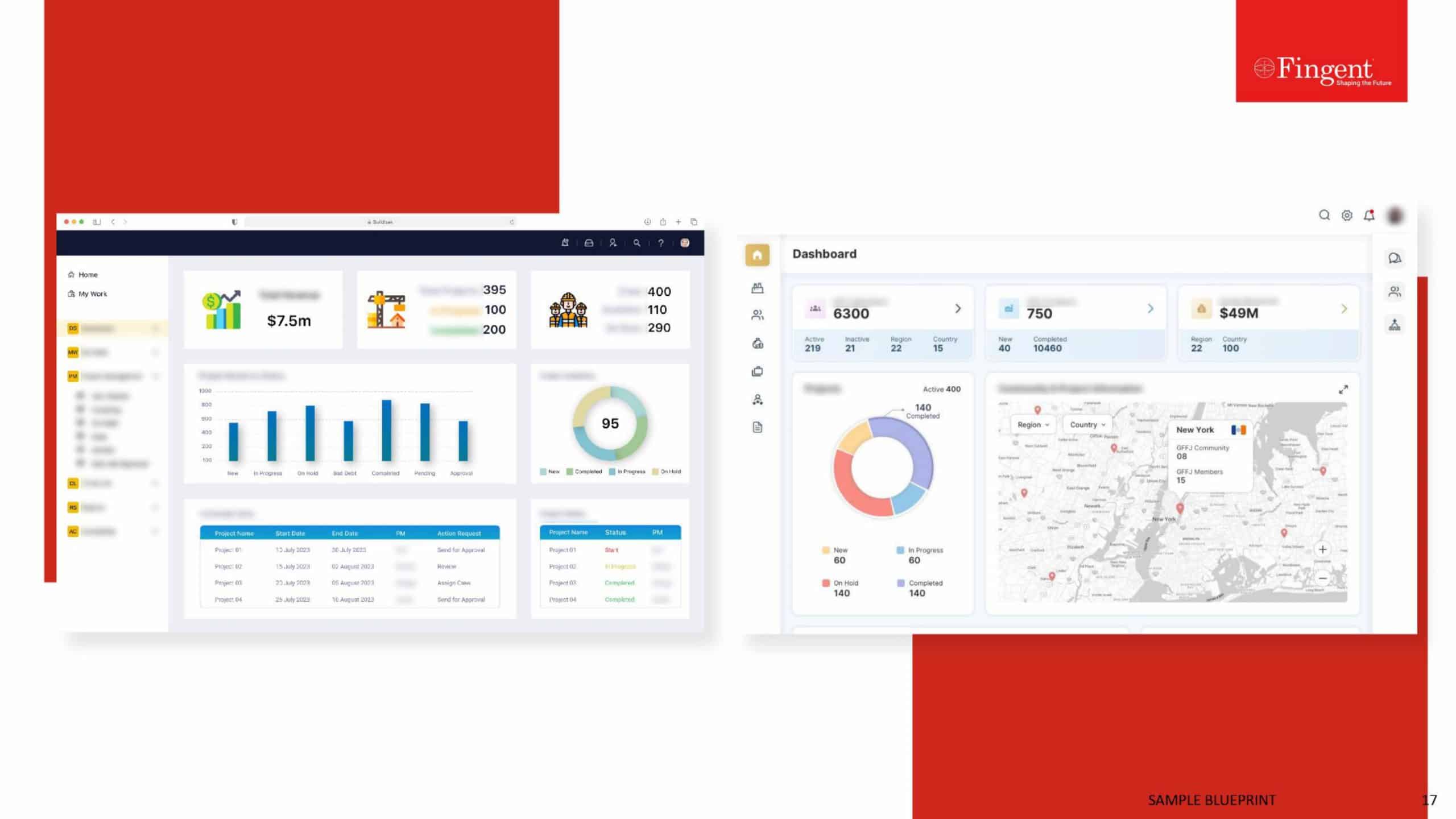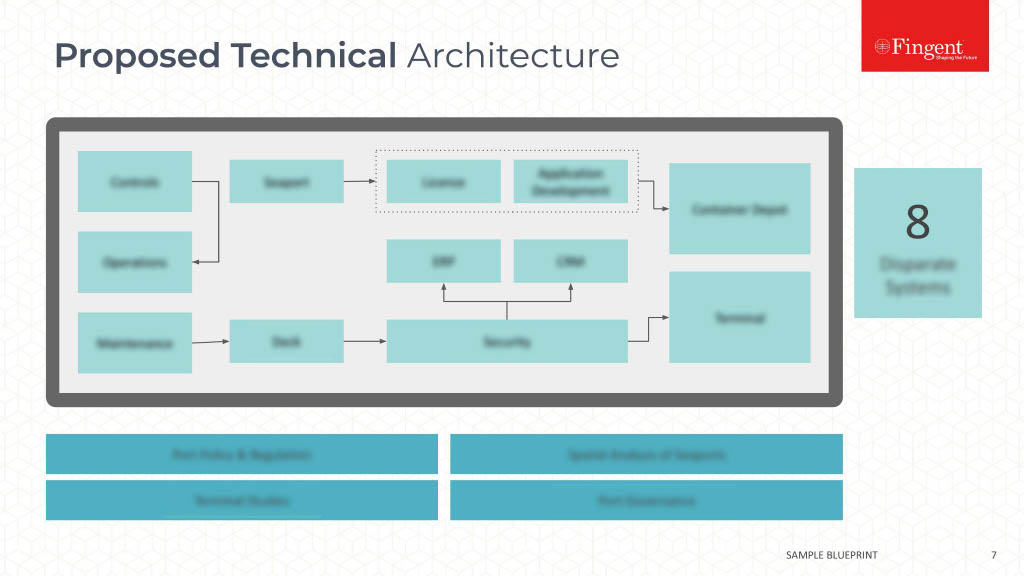Why systems integration
Importance of systems integration in business
What is business systems integration?
Systems integration, also known as IT integration or software integration, is the process of joining functional software and hardware modules into one cohesive infrastructure, enabling all pieces to work as a whole. Connecting disparate IT systems, services, and/ or software ensures that data flows smoothly between all application components used within an enterprise.
Why is systems integration important?
- Centralized control over daily tasks leads to increased productivity and efficient workflows
- Employees can access and use all the apps and data they need to work from one entry point
- Simultaneous update of data across all system components will keep all the departments of a business on the same page (single source of truth)
- Holistic view of information from a centralized repository helps extract useful business insights required to make faster and right decisions
- Centralized data management limits the margin for errors and saves the time of employees to focus on core business functions
- Systems integration is more cost-effective, feasible, and faster than replacing all disjointed components with a new single system
- Streamlines business processes and improves communication, collaboration, connectivity, and information sharing within the organization
Common Applications
Examples of business systems integration
Workplace: Integration of payroll management system with time logs, leave reporting tool, and accounting software.
Operations: Integration of CRM software with ERP, operational, marketing, and sales department tools will give the organization one unified database.
Insurance : Insurance companies use RPA for automating transactional operations, claims processing, premium payments and reconciliation, post-sale services, regulatory compliance, policy management, and underwriting tasks.
eCommerce: Integration of online stores with software modules like CRM, shipping and fulfillment, warehouse, inventory, order management, payment gateway, and email/ SMS marketing.
Analytics: Integration of custom analytics software with business applications helps derive business intelligence from multiple data sources to enable better decision-making.
Integration Models
Types and methods of business systems integration
Types of systems integration based on business needs
Business applications integration: All the functional components and subsystems within the business environment are brought together under a single value chain and the process of real-time data exchange between different applications is automated.
Legacy applications integration: Using cloud infrastructure, modern information systems, and latest technology to modernize legacy software that are a crucial and inseparable part of the daily business workflow.
Third-party software integration: Scaling up the capabilities and functionalities of existing business applications by integrating them with third-party tools, such as online payment gateways, social media marketing tools, etc.
Methods used for systems integration
Vertical integration: In this model, unrelated subsystems are integrated into one functional unit based on their functionalities. For instance, finance and accounting systems are connected to each other, but not necessarily to supply chain software.
Horizontal integration: Also known as the enterprise service bus (ESB), this model uses a single interface layer to communicate with all other subsystems and share data. Horizontal integration is largely opted by large enterprise organizations.
Point-to-point integration: A fairly limited and straightforward integration model in which one system directly integrates with another. Point-to-point integration is used in specific cases that do not require integrating with multiple data sources.
Star integration: Also known as spaghetti integration, it’s a collection of multiple point-to-point integrations that ideally fits small environments with specific use cases and limited data touchpoints.
Common data format: Enables data translation to promote automation. The integration works by transforming the data of systems to create a single shared format that avoids the complexity of using multiple standalone systems.
Need Help In Finding The Right Solution For Your Business?
Steps to Follow
Planning a successful systems integration project
- Identifying integration requirements and operational feasibility by evaluating the functionality and technical specifications of existing business applications
- Creating a detailed integration strategy including the scope, time, and cost of the integration project, and the potential risks to be addressed
- Integration project should be aligned with the goals of all stakeholders, so they are committed to supporting the project’s success
- Architecture design - detailed blueprints of how systems will interact with other extended systems
- Ability of the integrated systems to evolve and adapt over time to support the changing needs of the business
- Integration process - Performing actual integration based on the architecture design ensuring less risk and zero data loss
- Implementation methodology, testing integrated systems before going live, and steps to prevent data loss during the change
- Encouraging your team to quickly adapt to the changing environment brought on by the newly integrated systems
- Scheduling regular system maintenance to ensure that all components operate properly, without any errors and complications
Who is a systems integrator?
Role of a systems integrator in business transformation
Who is a systems integrator?
A system integrator (SI) is an individual developer or a software development company that has the technical skills and expertise to integrate software applications acquired from different vendors and ensure that the disparate subsystems work together seamlessly and stay compatible with each other to give users the intended results.
Why hire the services of a systems integrator?
- Responsible for designing, regulating, testing, and in many cases, managing the infrastructure operations
- Necessary contacts, resources, and know-how to perform systems integration with confidence and zero errors
- Tremendous cost and effort savings for organizations as they get more time to focus on areas that need attention
- Ability to fully manage integrations from start to finish or assist in the configuration of integrations, according to business needs
- Ample experience to integrate legacy on-premises IT systems with cloud-based applications or computing infrastructure
Pros & Cons
Benefits and challenges of systems integration
Benefits
- Simplifies data collection and processing across different subsystems
- Better accessibility and real-time availability of data
- Elimination of obsolete data and improved data accuracy
- Automated information flow increases efficiency and revenue
- Cloud-based data storage makes systems more scalable
- Eliminates individual software maintenance costs
Challenges
- Rapid changes in the IT and information systems landscape
- Legacy business systems running on monolithic architecture that are difficult to replace
- Lack of skilled resources
- Ambiguity over ownership of different subsystems leads to lack of accountability
- Picking the right integration tool from a sea of choices
- Complex integrations can be cost- and time-consuming
Costs & ROI
Factors affecting the cost & ROI of business systems integration
Investments
- Software licenses and infrastructure costs
- Cost to build and maintain integrations
- Cost to hire experts in integration/middleware
- Service costs including third-party vendor services and customizations
- Technology & training costs for employees and external partners connecting to integration
- Streamlining and standardization of process and workflows between applications
- Elimination of redundancies that are no longer needed
- Compliance with industry standards and government data regulations
- Instant access to business critical information needed to complete tasks more efficiently
- Automation of time-consuming and error-prone manual routines
How do we help?
Fingent’s approach to business systems integration
Systems integration offers immense opportunities for organizations to digitize and expand their business across several regions by adopting technologies such as cloud computing, Artificial Intelligence, data analytics, and Internet of Things. The increasing demand for low-cost and energy-efficient production processes is driving the adoption of software integration in the global market.
Fingent follows a robust and proven methodology for implementing and supporting custom software integration projects.
#1 Analysis: Analyze existing business applications to understand missing functionalities and new requirements, business challenges to be solved, and processes to be replaced.
#2 Architecture: Create an integration blueprint detailing how each software/ hardware component will be connected as a unified system to facilitate efficient data flow through the integrated systems.
#3 Design: Design the integration user experience based on user needs, ease of use, and how they will interact with the front-end applications.
#4 Implementation: Integrate individual software components and subsystems. Perform operational and end user testing to ensure the new workflow is smooth and easy to use.
#5 Ongoing Support : Support the evolving software integration needs, such as adding features, services, or connecting additional solutions to your architecture.
Still Stuck With Legacy Systems?
Insights
More Insights on Systems Integration Services













































